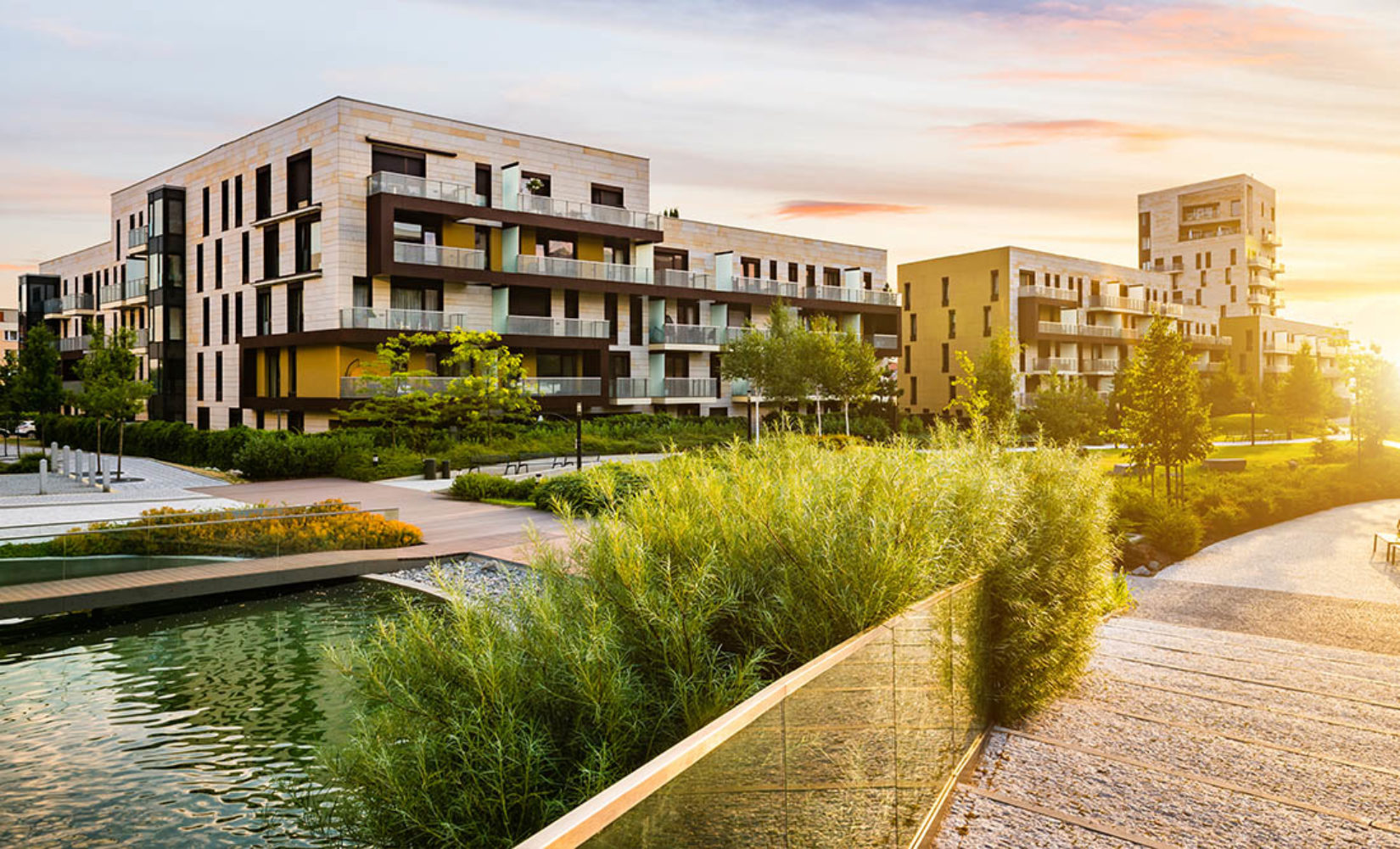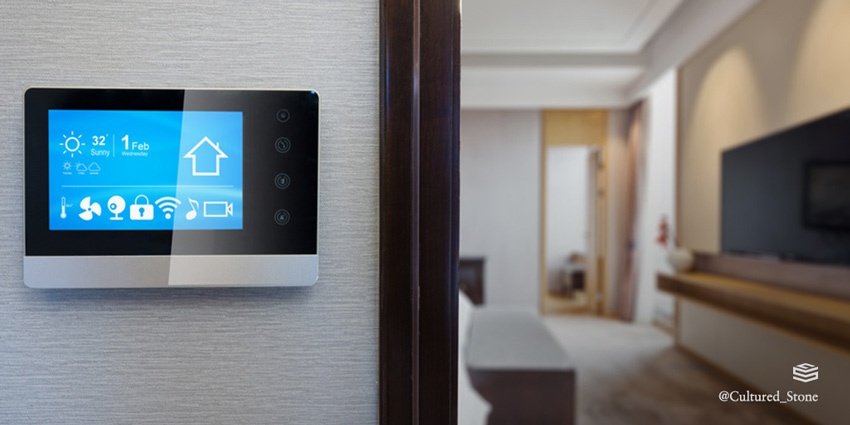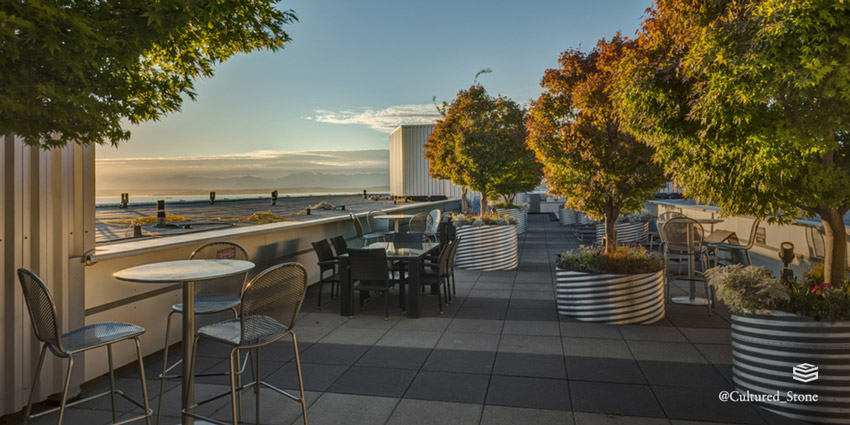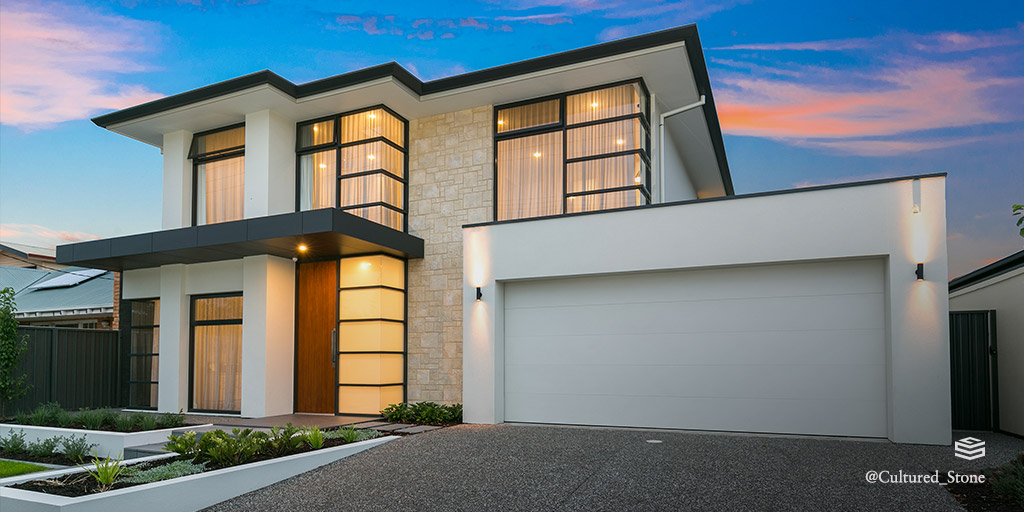Green Building Materials: 5 Sustainable Resources for Your Next Project
by Cultured Stone
POSTED IN: Design Trends

Green building has hit the mainstream. How can you incorporate more eco-friendly building materials into your next project and why should you? Read on…
According to the U.S. Energy Information Administration, buildings account for as much as 40% of total energy use in the United States. Add to that the fact that buildings also account for 68% of the nation’s electric consumption, and it’s easy to understand why sustainable design is more than a trend. It’s a necessity.
And it’s not just about the environment. Green building materials and sustainable design save on energy use and maintenance costs. The U.S. Office of Energy Efficiency and Renewable Energy notes that commercial buildings alone spend in excess of $190 billion annually on energy, and as much of a third of that energy is wasted, often as a result of poorly constructed building envelopes and poor design decisions.
Before you begin planning that next custom home project or downtown in-fill office building, consider how you might design with the planet (and potential cost savings) in mind while also staying well-informed on emerging sustainable building technologies. According to the latest World Green Building Trends report, 60% of new construction will incorporate green building materials by the end of 2018.
Related Reading: 3 Expert Architecture Tips: Design Smart Now To Avoid Costly Errors Later
Architectural Green Building Trends
Today’s green building trends place an emphasis on modular design that makes installations simpler and more cost effective and smart technologies that allow for intuitive operations of building mechanisms.
Here are our top five picks for energy-efficient and cost-saving green building materials for your next project:
1) Programmable Thermostats
Builders and homeowners can maximize the efficiency of HVAC systems by linking them to programmable thermostats. Homeowners and commercial building owners can set heating and cooling schedules to accommodate occupancy and times of day.

Today’s high-tech programmable thermostats even allow for remote programming from computers and smartphones, and some are smart enough to anticipate temperature adjustments based on past preferences and patterns. Consider The Edge in Amsterdam with its 30,000 building sensors that connect to an app that intuitively adjusts heating and cooling or the Honda Smart Home with its experimental Energy Management System that ties into the local grid to optimize a residence’s energy performance.
Related Reading: Architectural Trends: Looking Back and Predictions for 2018
2) Modular Weather Barriers
Tight building envelopes are the glue that holds an overall energy-efficiency design plan together. It doesn’t do a builder much good to install a highly efficient HVAC system if the building envelope isn’t secure. But even a builder with the best intentions must contend with the challenges of installing sheathing effectively, from improper seals to moisture penetration. Air leakage can account for 25-40% of a building’s energy usage. It’s a problem the entirely modular Securock ExoAir 430 System takes on with its glass-fiber-faced sheathing and factory-applied Tremco weather barrier. Arriving on-site and ready to install, it also reduces construction costs.
Cultured Stone products contain an average of 58% pre-consumer recycled content. Learn more with our free Beginner’s Guide to Manufactured Stone Veneer.
3) Green Walls and Rooftops
Increasingly, architects are taking sustainable design to a whole new level by covering rooftops and exterior walls in plants. This isn’t just the stuff of large corporations like Ford Motor Company or civic projects like Malaysia’s Forest City. Both commercial and residential architecture are showcasing rooftops and exterior walls that actively reduce carbon emissions, reduce the load on building HVAC systems, and help purify the air and conserve water.

4) Modular Gray Water Recycling
60% of architecture firms predict water efficiency and conservation will top sustainability goals for clients in the coming years, according to Architect magazine–and it’s no wonder. Water waste is a critical problem of the modern era, particularly in routinely parched and arid regions like the American West. But reusing waste water from showers and sinks (known as gray water) can be a costly proposition for commercial building owners.
Enter Grayworks Modular Graywater System, which offers a small, modular “plug-and-play” design that is easily installed and can treat from 1,000 to 10,000 gallons of gray water per day, depending on the size of the system. It also breaks down pollutants, removes solids, and includes an ultraviolet light for disinfection.
5) Durable, Recyclable, and Maintenance-Free Materials
Some of the greenest products available are those that won’t need replacement or maintenance. Long-lasting, durable, maintenance-free building materials are often as eco-friendly as it gets. Consider natural or manufactured stone, for example. Not only can these materials serve as a conduit for thermal gain (allowing for energy-free heating in winter), but they’re also among the most durable building materials available and can easily last the useful life of a building without any need for repair or maintenance, regardless of whether they’re being used in chimneys, walls (interior or exterior), or fireplaces.

Make Sustainable Building Materials Choices with Cultured Stone Veneer
Did you know that the National Association of Homebuilders has certified both natural stone and stone veneer as Green Approved products?
In fact, Stone veneer products by Cultured Stone provide even further green benefits as a result of their sustainable manufacturing footprint and minimum materials requirement of 58% recycled content. Architects and builders employing Cultured Stone can earn LEED® credits for indoor air quality and recycled content.
Cultured Stone also maintains a commitment to using low-emitting materials and manufacturing processes in the production of its products, including a closed-loop system for water consumption. Between 2006 and 2009, Cultured Stone’s North American plant saw a 50% drop in water consumption.
The company has also reduced its landfill waste by 80% since 2009. Cultured Stone backs the superior durability and long life cycle of its manufactured stone products with a 50-year warranty.
Cultured Stone products contain an average of 58% pre-consumer recycled content. Learn more with our free Beginner’s Guide to Manufactured Stone Veneer.